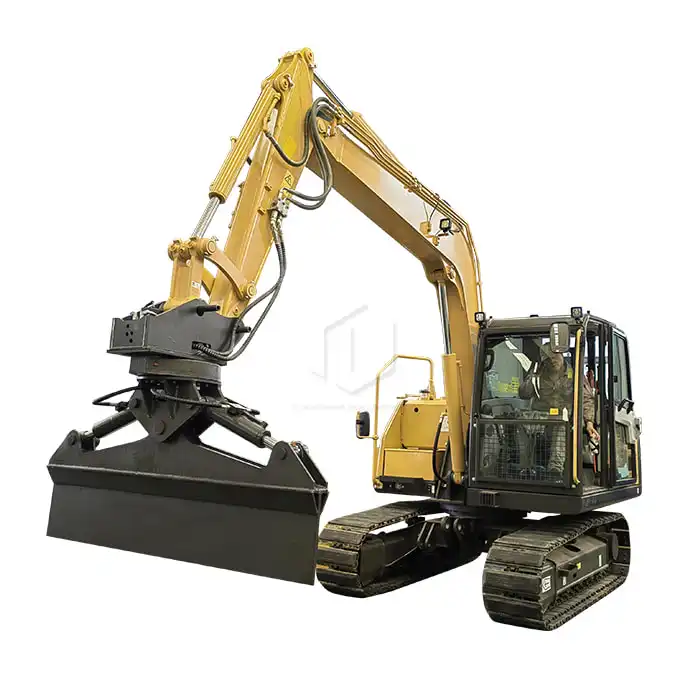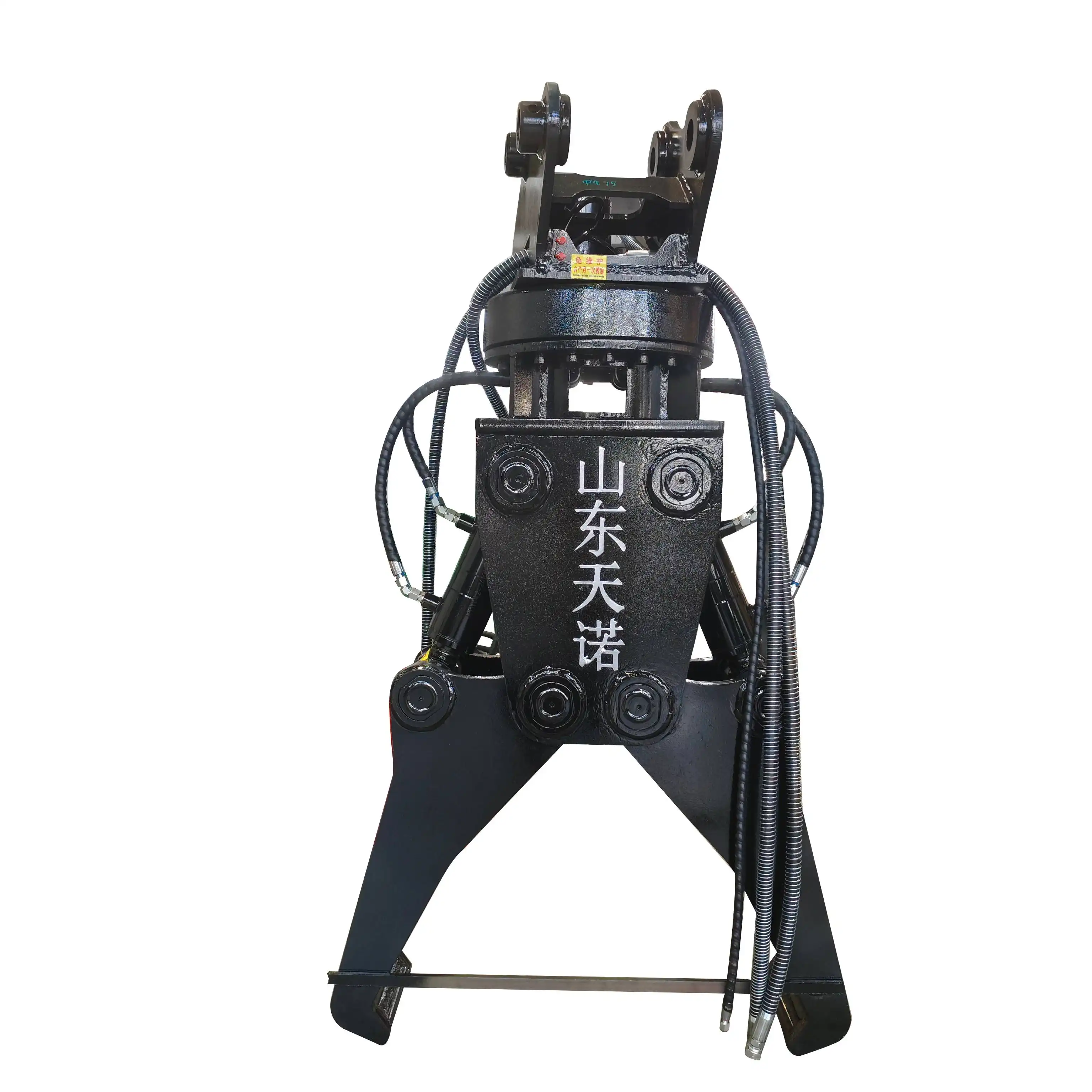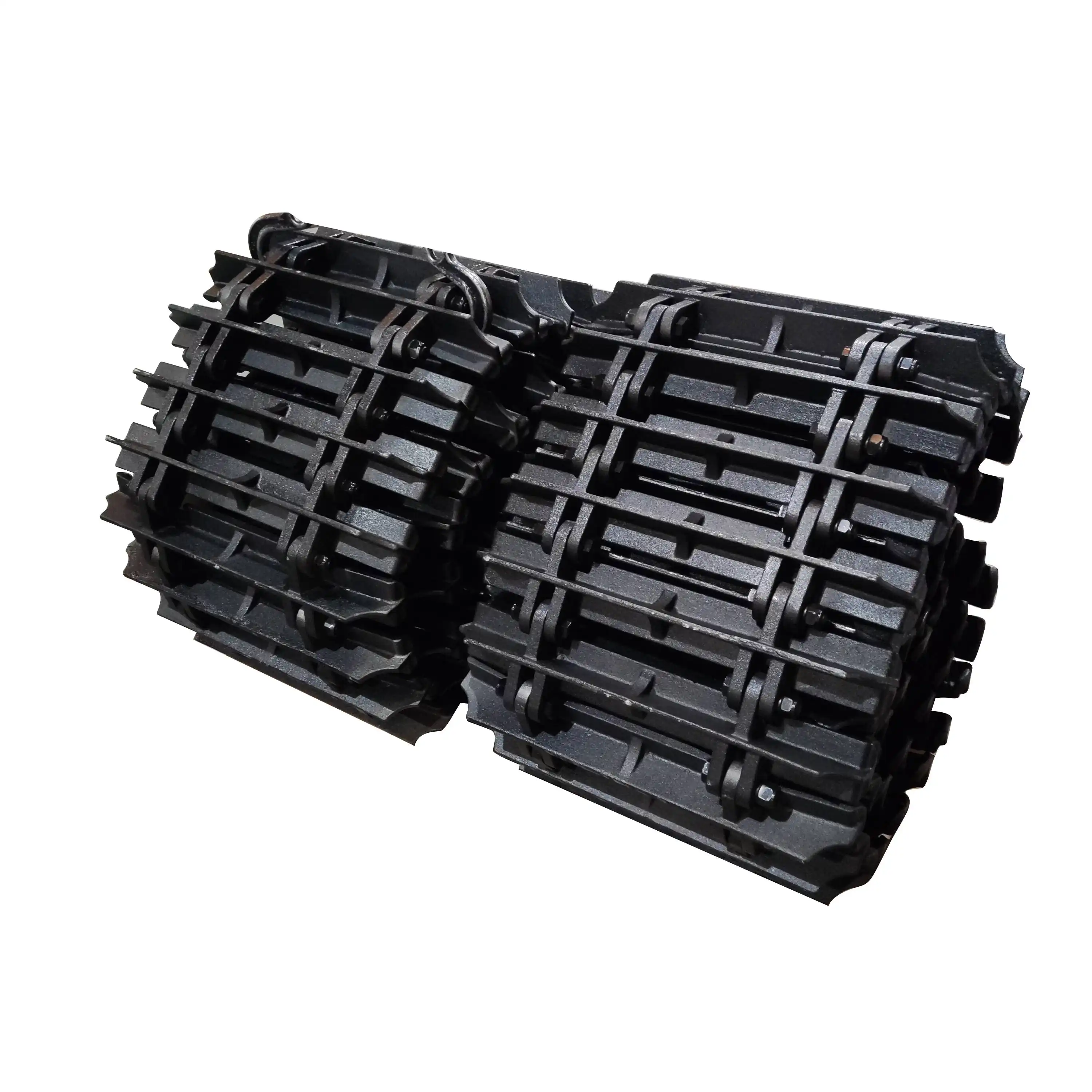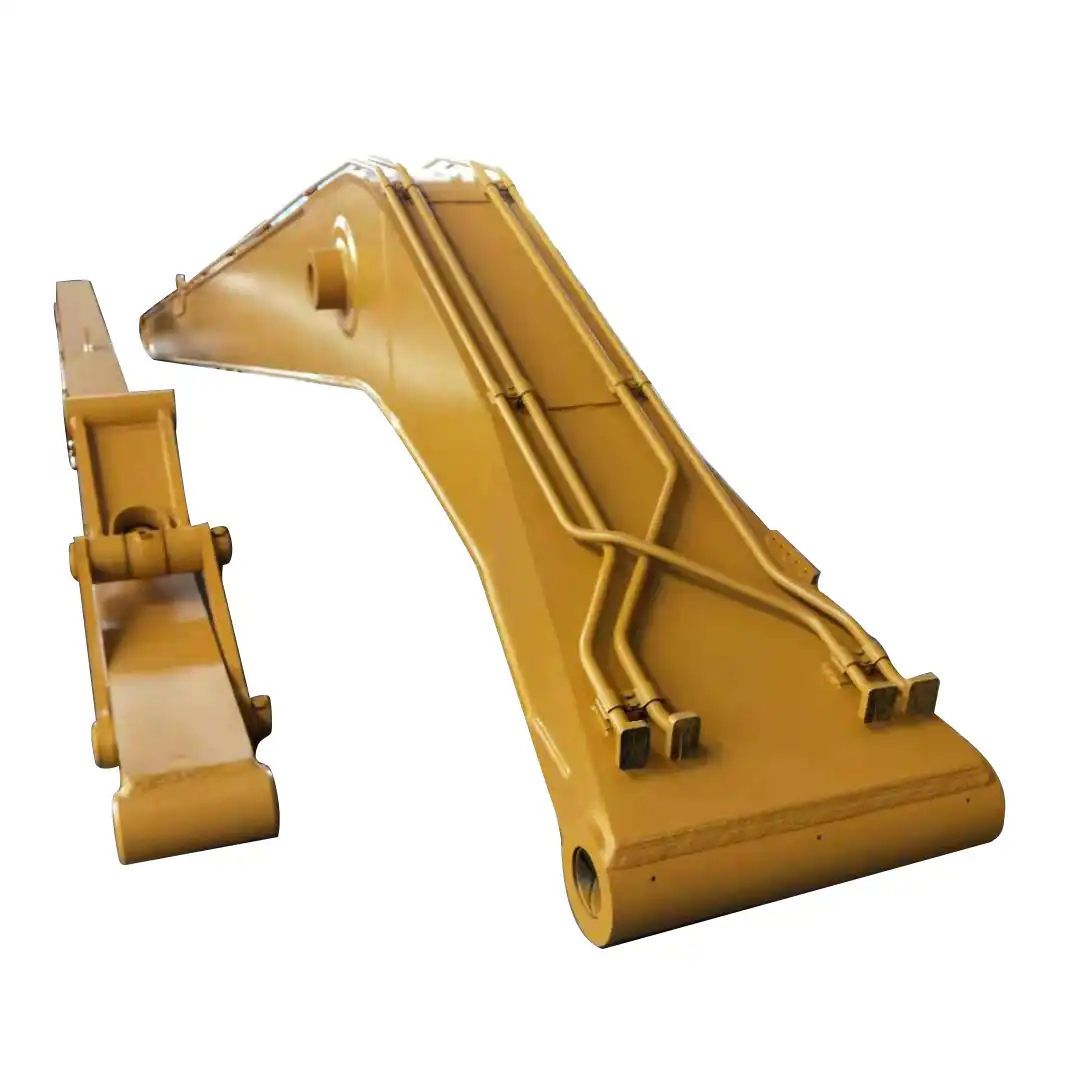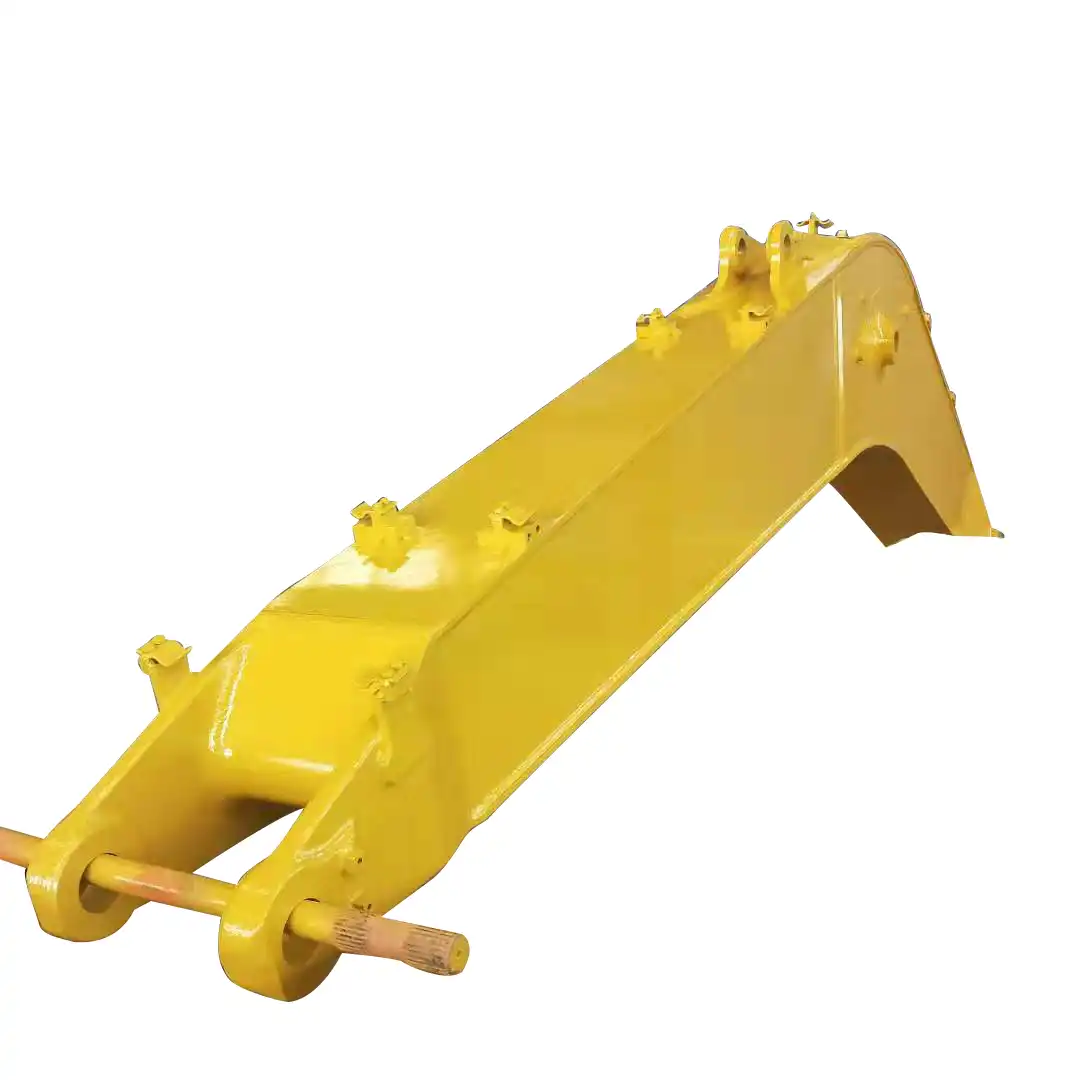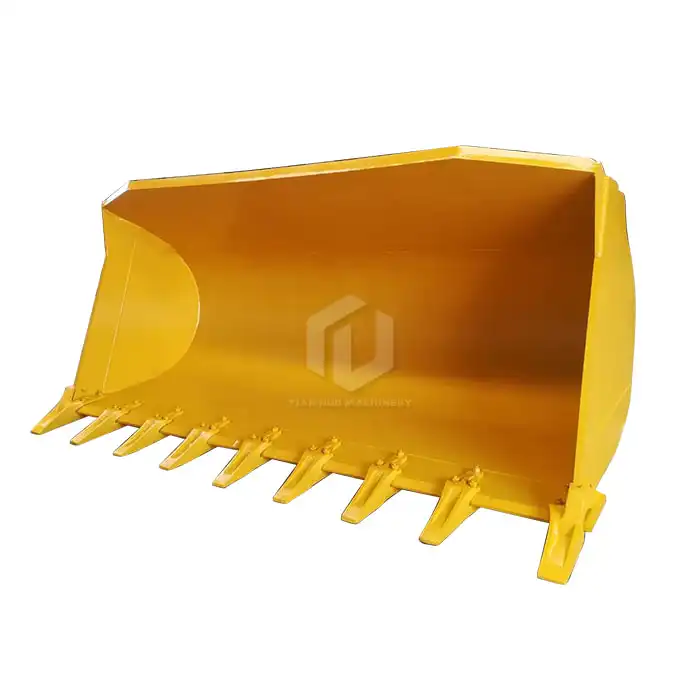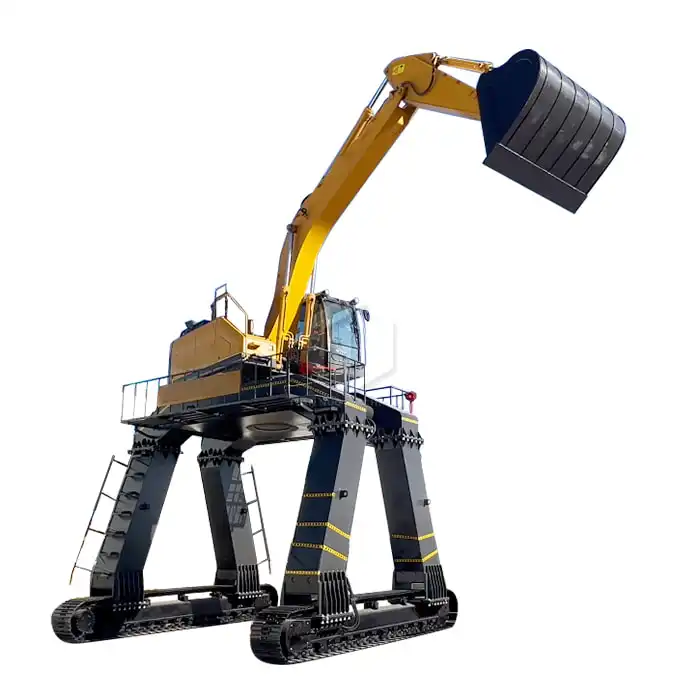How to measure excavator extension arm length?
Excavators are essential pieces of heavy machinery in construction and mining operations. One crucial component of an excavator is its extension arm, which significantly impacts the machine's reach and overall performance. Understanding how to measure an excavator extension arm length is vital for operators, site managers, and equipment purchasers. This article will delve into the importance of accurate measurements, methods for measuring, and how arm length affects excavator performance.

Why is it important to measure an excavator extension arm?
Measuring an excavator extension arm is crucial for several reasons. Firstly, accurate measurements ensure that the excavator can perform the required tasks efficiently. Different projects may require varying reach capabilities, and knowing the exact arm length helps in selecting the right machine for the job. Additionally, precise measurements are essential when replacing or upgrading extension arms, as ill-fitting components can lead to decreased performance, safety hazards, and potential damage to the excavator.
Moreover, understanding the extension arm length is vital for planning and executing excavation projects. It allows operators to determine the machine's reach and digging depth, which are critical factors in assessing whether an excavator can access specific areas of a construction site. This knowledge helps prevent situations where an excavator might be unable to reach certain spots, potentially causing delays or requiring additional equipment.
From a safety perspective, knowing the exact length of the excavator extension arm is crucial. It helps operators maintain safe working distances from obstacles, power lines, and other potential hazards. Accurate measurements also assist in calculating the excavator's stability under various load conditions, reducing the risk of tipping or accidents during operation.
Lastly, for equipment managers and purchasers, understanding excavator extension arm lengths is essential for inventory management and procurement decisions. It ensures that the right equipment is available for different projects and helps in making informed choices when acquiring new machinery or replacement parts.
How to accurately measure an excavator extension arm?
Accurately measuring an excavator extension arm requires attention to detail and the right approach. Here's a step-by-step guide to help you measure the arm length correctly:
1. Prepare the excavator: Before measuring, ensure the excavator is on level ground and the arm is fully extended horizontally. This position provides the most accurate measurement and ensures consistency.
2. Identify measurement points: The extension arm length is typically measured from the center of the boom foot pin to the center of the bucket pin when the arm is fully extended. These points serve as your reference for measurements.
3. Use appropriate tools: A laser measuring device is ideal for accurate measurements, especially for longer arms. If a laser measure is unavailable, a long tape measure can be used, but ensure it's pulled taut for accuracy.
4. Take multiple measurements: To ensure accuracy, take at least three measurements and calculate the average. This helps account for any slight variations in your technique.
5. Consider the bucket: Remember that the bucket adds to the overall reach of the excavator. Measure the bucket length separately and add it to the arm length for a complete understanding of the excavator's reach.
6. Document the measurements: Record all measurements, including the arm length, bucket length, and total reach. Note the date of measurement and the specific model of the excavator for future reference.
7. Check manufacturer specifications: Compare your measurements with the manufacturer's specifications. While there may be slight variations due to wear or modifications, significant discrepancies should be investigated.
8. Consider professional measurement: For critical applications or when purchasing equipment, consider hiring a professional surveyor or using specialized equipment for the most accurate measurements.
It's important to note that some excavators have telescopic arms or multiple extension options. In these cases, measure each extension separately and document the total reach at various extension points. This comprehensive approach ensures you have a complete understanding of the excavator's capabilities.
How does arm length impact excavator performance?
The length of an excavator extension arm significantly influences the machine's performance in several ways. Understanding these impacts is crucial for optimizing excavator use and selecting the right equipment for specific tasks.
Reach and digging depth: The most obvious impact of arm length is on the excavator's reach and digging depth. A longer arm allows the machine to access areas further from its base and dig deeper holes. This extended reach can be particularly beneficial in projects where access is limited or when working on steep slopes. However, it's important to note that while a longer arm increases reach, it may also reduce the maximum lifting capacity at extended distances.
Lifting capacity: Arm length directly affects an excavator's lifting capacity. Generally, shorter arms provide greater lifting power closer to the machine, while longer arms offer more reach but with reduced lifting capacity at extended distances. This trade-off is due to the physics of leverage – as the arm extends, the force required to lift a given weight increases.
Stability: The length of the extension arm impacts the excavator's stability, especially when fully extended. Longer arms can create more leverage, potentially affecting the machine's balance, particularly when lifting heavy loads or working on uneven terrain. Operators must be aware of these stability considerations to ensure safe operation.
Maneuverability: Excavators with shorter arms tend to be more maneuverable in confined spaces. They can often work more efficiently in tight areas, such as urban construction sites or narrow trenches. Conversely, longer arms may require more space to operate effectively but offer greater flexibility in reaching over obstacles or across wider areas.
Fuel efficiency: Arm length can indirectly affect fuel efficiency. Longer arms may require more energy to operate, especially when moving heavy loads, potentially leading to increased fuel consumption. However, the ability to reach further without repositioning the excavator can sometimes lead to overall efficiency gains in certain applications.
Versatility: The choice of arm length affects the excavator's versatility. Machines with interchangeable arms or telescopic extensions offer greater adaptability to different job requirements. This flexibility can be particularly valuable for contractors working on diverse projects or in varied environments.
Productivity: The right arm length can significantly enhance productivity. For example, in mass excavation projects, a shorter, more powerful arm might be more efficient. In contrast, for precise digging or working around existing structures, a longer arm with better reach could be more productive.
Transport considerations: Longer arms can pose challenges during transportation, potentially requiring special permits or arrangements. This factor should be considered when selecting equipment, especially for projects requiring frequent relocation of machinery.
By understanding how arm length impacts excavator performance, operators and project managers can make informed decisions about equipment selection and usage. This knowledge ensures that the right excavator is chosen for each task, optimizing efficiency, safety, and overall project success.
Excavator Extension Arm For Sale
For detailed information or inquiries about the excavator extension arm, please reach out to our management team at arm@stnd-machinery.com, or connect with our dedicated team members at rich@stnd-machinery.com and tn@stnd-machinery.com. At Tiannuo Machinery, we are committed to delivering excellence in railway maintenance solutions, providing you with the right equipment to enhance your operational efficiency and project success.
References:
[1] Construction Equipment Guide. (2021). "The Importance of Proper Equipment Selection in Construction."
[2] Caterpillar Inc. (2020). "Excavator Performance Handbook."
[3] Journal of Construction Engineering and Management. (2019). "Optimizing Excavator Performance through Arm Length Selection."

